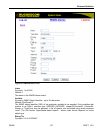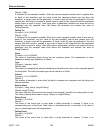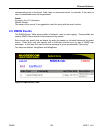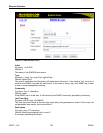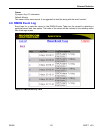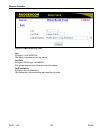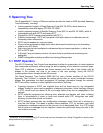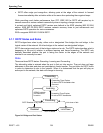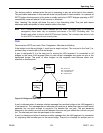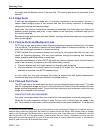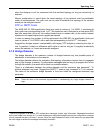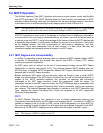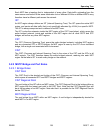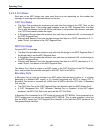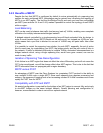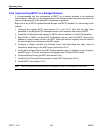
Spanning Tree
RS400 135 ROS™ v3.5
The learning state is entered when the port is preparing to play an active part in the network.
The port learns addresses in this state but does not participate in frame transfer. In a network of
RSTP bridges the time spent in this state is usually quite short. RSTP bridges operating in STP
compatibility mode will spend 6 to 40 seconds in this state.
After “learning” the bridge will place the port in the forwarding state. The port both learns
addresses and participates in frame transfer while in this state.
Note: ROS
™
introduces two more states, Disabled and Link Down. Introduced purely for purposes of
management, these states may be considered sub-classes of the RSTP Discarding state. The
Disabled state refers to links for which RSTP has been disabled. The Link down state refers to links
for which RSTP is enabled but are currently down.
Role
There are four RSTP port roles: Root, Designated, Alternate and Backup.
If the bridge is not the root bridge, it must have a single root port. The root port is the “best” (i.e.
quickest) way to send traffic to the root bridge.
A port is designated if it is the best port to service the LAN segment it is connected to. All
bridges on the same LAN segment listen to each others’ messages and agree on who is the
designated bridge. The ports of other bridges on the segment must become either root,
alternate or backup ports.
Figure 95: Bridge and Port Roles
A port is alternate when it receives a better message from another bridge on the LAN segment it
is connected to. The message that an alternate port receives is better than the port itself would
generate, but not good enough to convince it to become the root port. The port becomes
alternate to the current root port and will become the new root port should the current root port
fail. The alternate port does not participate in the network.
A port is a backup port when it receives a better message from the LAN segment it is connected
to, originating from another port on the same bridge. The port is a backup for another port on
D
Root
Bridge
Designated
Bridge
Designated
Bridge
12
1
2
1
32
DP DP
RP
RP
AP
DPBP
A
DP
3
RP = Root Port
DP = Designated Port
AP = Alternate Port
BP = Backup Port



